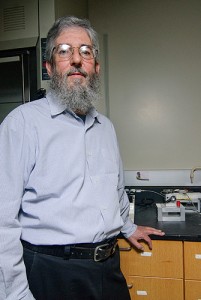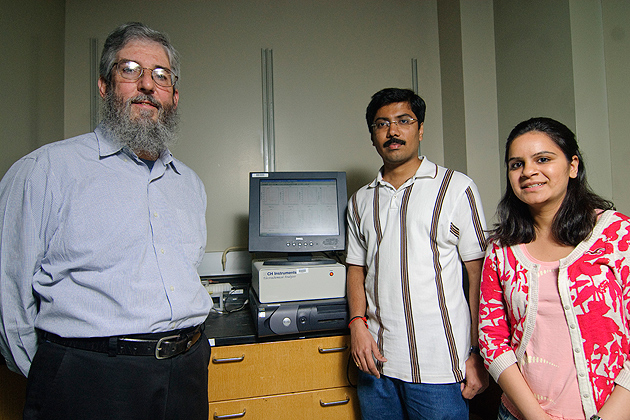
One of the hallmarks of cancer is that it often doesn’t show itself until it’s too late. But now Professor James Rusling of the chemistry department has developed a method that detects with high accuracy the presence of multiple proteins in the bloodstream indicating that a person has oral cancer.
In 2010, Rusling and his colleagues developed a method to detect a specific protein, called interleukin-6, that could signal that a person had oral cancer. But this single protein was not enough to make a clear case: When using only one biomarker, as these proteins are called, Rusling says false positives and negatives are too common.
“Single biomarkers do not provide enough statistical power, and there is too much biological variability in humans for predictions based on them to be correct more than three-fourths of the time at best,” he says. “And often prediction reliability is much worse than this.”
So being able to test for several different biomarkers, all of which could identify an oral cancer, increases the odds that cancer will be detected, and detected early.
“For oral cancer, there is no one biomarker accepted for diagnostic use, and tumors are diagnosed by visual inspection of the mouth cavity,” explains Rusling. “So the validation of the panel we have developed will provide a new diagnostic tool for oral cancer.”
The method Rusling and his colleagues developed works by attaching antibodies to proteins that are present in high levels when there are cancerous cells in a person’s system. Through a series of steps, these antibodies then produce an electric current that is read by another antibody embedded in a sensor chip created by the team. The chip can detect eight different signals.
The team tested the device by using it to detect four different proteins, and the result was a higher sensitivity to the protein’s signals than has ever been demonstrated.
The next hurdle is to transition the medical field into these multiple biomarker measurements. Many cancers, such as prostate cancer, are detected with some measure of accuracy using a single biomarker. Rusling and his collaborators are not only developing these methods, but are helping with the transition from single-biomarker to multiple- biomarker clinical cancer diagnostics.
“In the future, we hope to develop and measure panels that not only detect certain cancers, but also provide specific information to guide personalized therapy,” Rusling says.
The research was funded by the National Institutes of Health’s National Institute of Biomedical Imaging and Bioengineering and done in collaboration with Dipak Dey of the UConn Department of Statistics and other researchers from Maryland, Rhode Island, and Malaysia.



